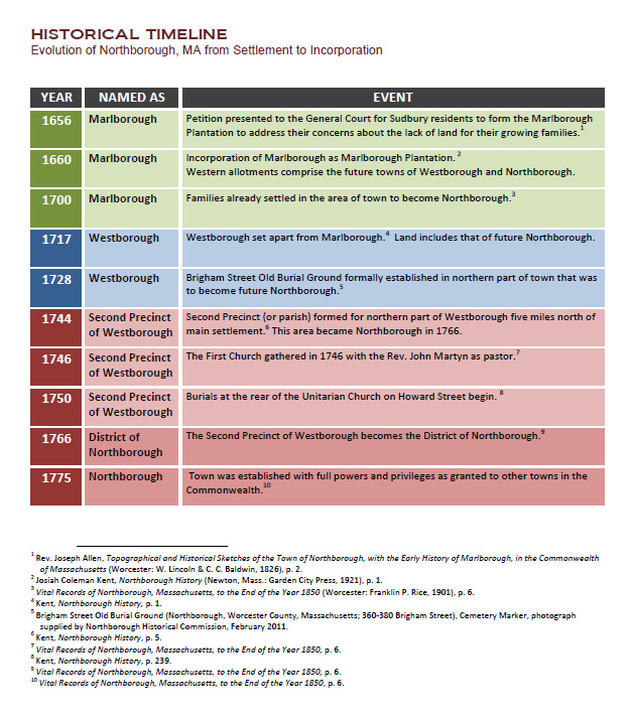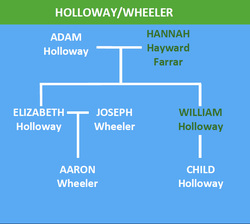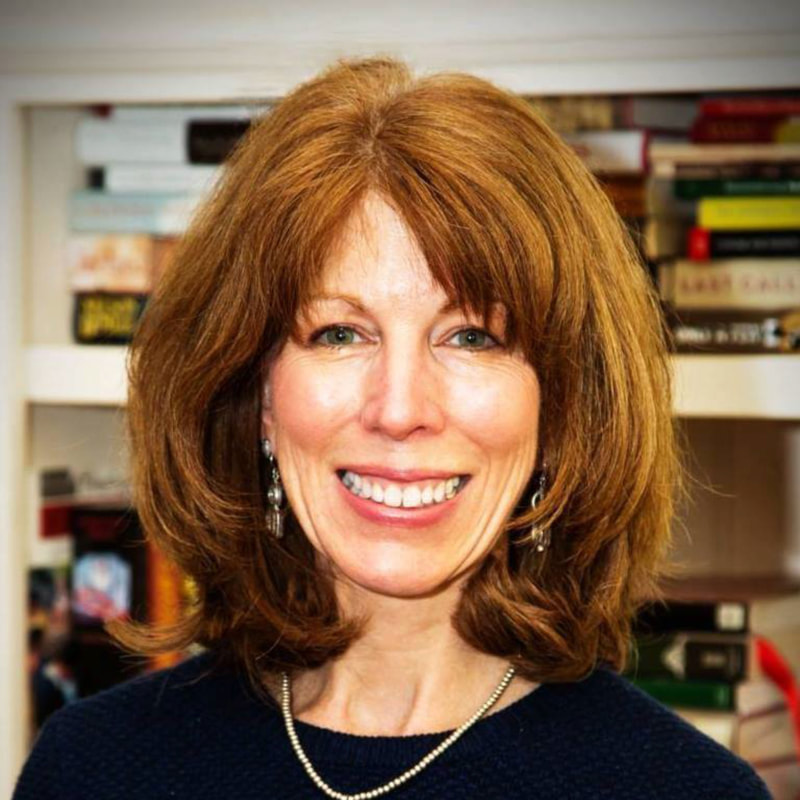|
RECAP OF RESEARCH DONE TO DATE: The Brigham Street Burial Ground (Northborough, Mass.) was established in 1728 to accommodate burials for those families living in the "northern part" of Westborough and was actively used until the First Church graveyard on Howard Street was established abt 1749. As the beginning phase of any research project includes gathering "known" evidence, my first step was to visit the cemeteries and verify what could be "seen" as the jumping off point for evidence collection. While visible tombstones are an original source for evidence, additional documentation of deaths between 1728 and 1749 might provide evidence of other burials there. Therefore, the next type of information I needed to locate what was either written by someone who witnessed the burials, or records of burials created close to the time they happened. As I previously noted, the diary volumes of Reverend Ebenezer Parkman (see "Sources" page) contain the most reliable information located to date; he either officiated, attended, or was informed of burials at that time. NEW RECORD SEARCHED: Vital Records of Northborough, Massachusetts to the Year 1850 (Worcester, Mass.: Franklin P. Rice,1901) was the next source I evaluated. Although Northborough was still known as "northern Westborough" during the period being researched (1727-1749) and was not incorporated until 1775, I was able to find pre-revolutionary deaths included in the Northborough records. That presented the theory that extra effort was taken to include deaths in the physical land area of Northborough, regardless of jurisdiction. While not proof, there also seems to be a strong possibility that those "northern Westborough" deaths = "northern Westborough" burials. (Quick reminder here: the Brigham Street Burial Ground was established so that "northern Westborough" families did not have to travel up to 6 miles south to bury their loved ones near the meeting house.) Although the vital record book was published over 150 years after the first recorded death, the compiled information came from sources originally created close to the time of the actual deaths (church records, town records, tombstones, private records). By definition, this derivative source (not the actual piece of paper the death was recorded on) is not as reliable as an entry in the archived diary, but the original records were nonetheless created with the noble intention of documenting deaths close to when occurred. My goal was to match up the impartial early death records from Northborough with dated entries in Rev. Parkman's transcribed diary. (NOTE: the original diary should be viewed during future research.) The final step was to locate any burials for the recorded deaths [before 1750] at the Howard Street Old Burial Ground, whose opening abt 1750 facilitated the closing of Brigham Street Burial Ground. Any of the burials not found at Howard Street would be added to the list of possible burials at the older Brigham Street site. RESEARCH RESULTS: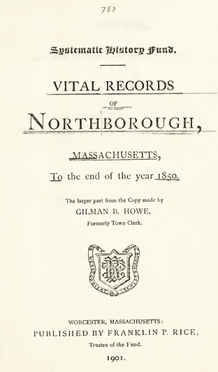 Vital Records of Northborough, Massachusetts to the Year 1850 Eager, James, s. James and Miriam, May 26, 1749 a. 1 d. Eager, Joseph, s. James and Miriam, May 29, 1749, a. 4 d. NOTE: These twins were buried at the "new" Howard Street Burial Ground, est. 1749/50. Fay, Hezekiah, s. Timothy and Lydia, Sept. 13, 1746. Fay, Lydia, d. Timothy and Lydia, Sept. 14, 1746 Fay, Timothy, s. Timothy and Lydia, April 29, 1743 Fay, William, s. Timothy and Lydia, Sept. 13, 1746 NOTE: These Fay siblings died before the Howard Street site opened and during the years Brigham Street site was active. There burials are not listed at Howard Street and will be added to the list of possible burials at Brigham Street. 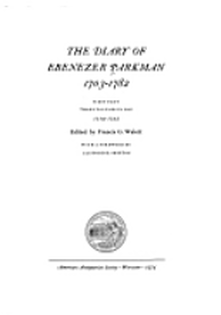 The Diary of Ebenezer Parkman (1703-1782): First Part, Three Volumes in One (1719-1755). 1) Entry for 12 September 1746: "Hear of Several Deaths in our North Precinct." (p. 142) NOTE: While the Fay children are not specifically mentioned along with 2 Rice children's deaths, the fact that so many children died in one family, and at the same time other children died, follows the logic of an epidemic affecting the very young. The area to become modern Northborough was set apart from Westborough as "Second Precinct of Westborough" in 1744. 2) No entry for April 1743. (Only the months of January and September are included for that year.) This was about the time "northern Westborough" was organizing a partial separation from Westborough. 3) No entry for 1749 (Northborough had already separated from Westborough for church matters as it had its own church and minister.) SUMMARY OF RESEARCH: The 2 Eager children that died in 1749 appear to be the first recorded deaths in the town that were buried at the Howard Street Burial Ground. There was no other official burial site in the north section of Westborough (modern Northborough) other than the Brigham Street Burial Ground at the time of the Fay children's deaths. Therefore, it is possible that the 4 Fay children who died during the years of 1743-1746 were buried as a family group at the Brigham site, alongside the documented burial of their cousin, "CHILD Fay." NEW TREES WITH 4 IDENTITIES ADDED: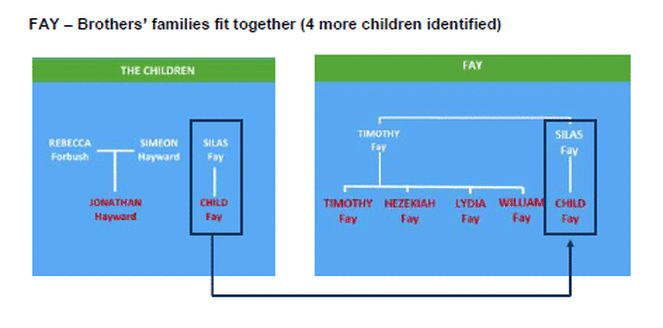 The Fay siblings located in the death records were the cousins of one of "The Unidentified Children," Child Fay. This not only gives us another puzzle piece for the list of potential burials, this piece SNAPS the two Fay families together as a "family group." SOURCES: Brigham Street Burial Ground (Northborough, Worcester County, Massachusetts; 360-380 Brigham Street). Howard Street Old Burial Ground (Northborough, Worcester County, Massachusetts. Parkman, Ebenezer. The Diary of Ebenezer Parkman (1703-1782): First Part, three Volumes in One (1719-1755). Edited by Francis G. Walett. Worcester: American Antiquarian Society, 1974. Vital Records of Northborough, Massachusetts to the End of the Year 1850. Worcester, Mass.: Franklin P. Rice, 1901.
0 Comments
This week's research included establishing the historical event baseline to which all evidence can be compared. For the next phase of research, which is to locate vital records (birth, marriage, and death) for "persons of interest", it is crucial to understand in what official town those Northborough ancestors would have been known to have lived during their lifetime.
As illustrated in the timeline below, the land that was to eventually be incorporated as Northborough had several iterations after settlement about 1660. As population increased during the next century, the large area established as the Marlborough Plantation was eventually divided up into the following smaller towns: Northborough, Westborough, Marlborough, Hudson, and Southborough. HOLLOWAY/WHEELER Family + HOLLOWAY Child = Family Group
There were two pieces of the puzzle that needed to be investigated: (1) The 4 known burials of the Holloway extended family (2) The newly found burial of a Holloway child (from Rev. Ebenezer Parkman's August 1738 diary entry) The shared surname indicated that there may have been a close familial relationship and that families did desire to be buried together. Further investigation found that the Holloway child was the grandchild of Adam Holloway (the oldest of the remaining stones in the Brigham Street Burial Ground). Adam's son William had at least 8 children, all born before or during the years the Brigham Street burial site was officially active (1727-1749). As for the exact identity of the child who is buried there, additional research needs to be done, specifically to document which children died on or before Aug 1738. To date, I have a record of one childhood death, that of William Holloway, Jr. (1726-1727). This week has been spent researching the Who's Who of Adam Holloway's early colonial family. Using various towns' birth, marriage, and death records in tandem with the town's published histories, I've uncovered a wonderfully large family full of intriguing stories. There are promising lives lost to Indian terrorism, young love cut short by war, widows left to build new lives in new places...and the brave men that took risks to plant the seeds of our country's strength.
While there are many more places to peek for clues to this family's adventures, the one little tidbit that keeps cropping up is how my modern life crosses their old paths every blessed day. I found Adam's burial place quite out of curiosity, nothing else. But I have also discovered that he and his family are a lot closer; they probably owned the land on which my house was built. That can only mean one thing; the meadow I gaze across every morning with my cup of coffee and the nearby hillside I fall in love with all over again every foliage season has taken on another facet which can only be explained by Serendipity. The next time you see an old stone wall or a clearing in the woods, think of our early pioneers...and just imagine what is was like to be them. Eye opening, really. |
AuthorBeth Finch McCarthy
|
